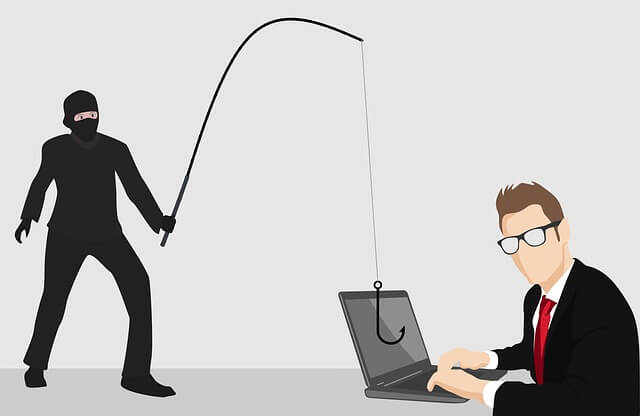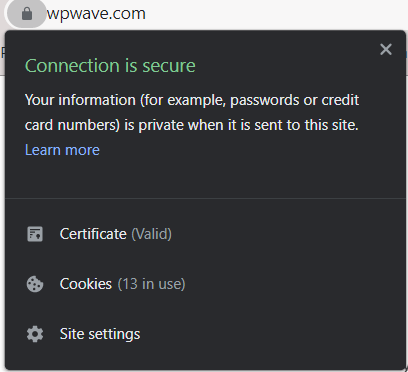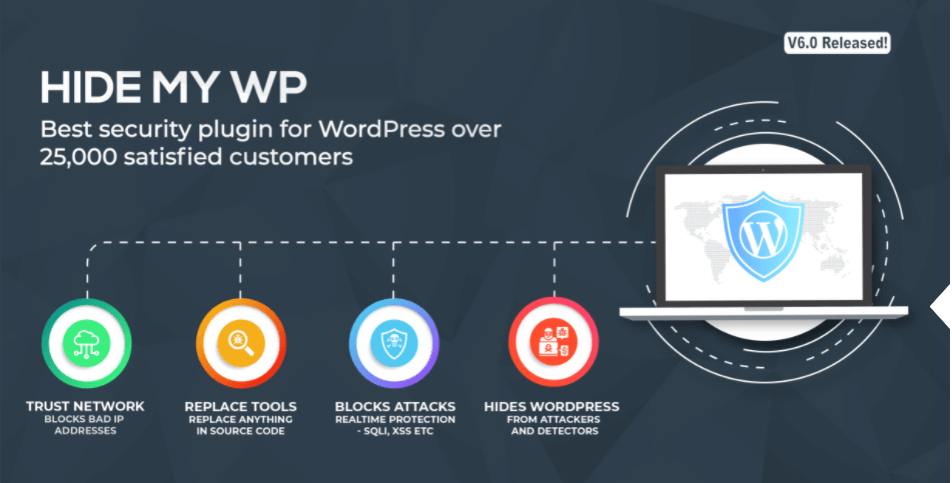URL phishing attacks are commonly seen attacks these days. Over 3 billion URL phishing emails are sent every day. How are WordPress and URL phishing attacks related though? WordPress websites are very efficient to use, and it is the best content management system across the world. Its popularity is increasing at an alarming rate. No wonder hackers are targeting WordPress websites quite often these days.
However, website owners are not always the only ones who face the consequences of having their website attacked by a hacker. But sometimes, the users of the website can be bothered by the actions of the hacker. A simple example of this kind of attack is URL phishing. This article will help you understand a URL phishing attack in detail while also helping you understand the importance of website security.

URL Phishing Attack
What exactly does URL phishing mean? URL Phishing is a fraudulent practice used by a hacker to trick users into clicking on a URL that allows them to gather confidential information like usernames, passwords, and bank account details.
A hacker can use login credentials for identity theft or read private emails. He can steal your money using the information he got regarding your bank account/credit card details. This attack can result in an immense loss if we don’t stay vigilant.
How Does URL Phishing Attack work?
A hacker sends a URL that looks like it is from a legitimate website( but it’s not) to a user’s email as a result of URL spoofing. Once the user clicks on the link, he gets queried about login details or credit details. This way, he can steal this information without the user knowing. If a hacker uses his server to send the phishing URL, it gets traced back to him, and he’ll be in trouble. So, he executes this attack by using someone else’s server. Hence, you must be careful not to let a hacker attack your website.
Let us consider few scenarios in which a hacker uses URL phishing attack to scam people:
Warning Emails
Email attack is the most common way a hacker uses to steal your information. He sends an email warning you that someone unauthorized is trying to log into your account. They create a panic atmosphere and urge you to change your password immediately.
You being anxious about your account’s safety, try to secure it as soon as possible and click on the link that redirects you to a fake website to change the password. Unfortunately, he now has the details of your account, whether it’s an application or bank account.
Fake Ads
Consider that you are on your Instagram scrolling mindlessly and see the jaw-dropping deals on your favorite brand. You end up on that website looking at all those trendy clothes and add them to your cart immediately so that you don’t miss this opportunity.
In this excitement, you do not stop to consider if it is a legitimate website and complete the payment for the order. Days later, you find out that there is fraudulent activity on your credit card. Yeah, you fell into the scammer’s trap(it’s just a fake scenario, don’t worry).
How Will This Affect A Website Owner?
If a hacker exploits the vulnerabilities of your website, he can attack it and use your website server to implement URL phishing on your users and others. This action will ruin your website’s reputation and make your users distrust your website. Rebuilding the user’s trust is not an easy task.
Prevention is better than cure.
Desiderius Erasmus
How To Identify A URL Phishing Attack?
Here are few ways that will help you spot a phishing attack:
- Look if the email has the URL of the legitimate website. They might look almost the same, but there ought to be subtle differences.
- Many phishing emails will urge you to act upon the issue immediately.
- Look for grammatical mistakes because most attackers don’t pay much attention to the grammar in the mail.
- If an email asks for you to provide personal information, it’s a big red flag! No company will ever require you to submit personal information in the mail.
- If you have clicked on the link, check if the webpage looks real enough. If your gut says no, trust your instinct. There will be minor details that give away if the website is legitimate, so look for them.
- If the website URL has HTTP protocol instead of HTTPS, then the website is unsafe.

7. Check if the website that the URL redirected to has a trust seal or a certificate. If it has these, it’s probably a secure website. However, a hacker can register SSL for his website. So, a website can still be fake even with a trust seal and certificate.

If you are a WordPress user, you should protect your website so that the hacker doesn’t attack your website to use its server to implement a URL phishing attack. We have many security plugins like the Hide My WP that assist in securing your website. Some mind-boggling features of the Hide My WP security plugin are:

- It lets you hide or rename the themes and plugins folders.
- It can hide your WordPress.
- It helps you change WordPress permalinks.
- It will help you hide the login page of your website to prevent brute-force attacks. This feature will help you set up a login query and login key.
- It has a firewall that can block attacks like SQL, XSS, CSRF, read arbitrary files, and brute force attacks.
- It informs the user about:
- Value (How they hack you?)
- Page (Which plugin did they use?)
- Impact (How dangerous is that?)
- IP/ users (Where are they from?)
- It will assist in hiding or renaming WP-admins.
- It will disable direct access to PHP files and directory listing.
- It will let you minify HTML and CSS.
- It will allow you to change anything in your source code.
- It has anti-spam included.
Final Note
URL phishing can be very dangerous if we fall into the scammers’ traps. We have to be cautious of links we are clicking on and not share any information on the websites unless we are sure that the website is legitimate. All the website owners must also be careful not to let hackers attack their websites because it affects you as well as your website users.
Also Read: How Unknown Third-Party Code Harms Websites?
